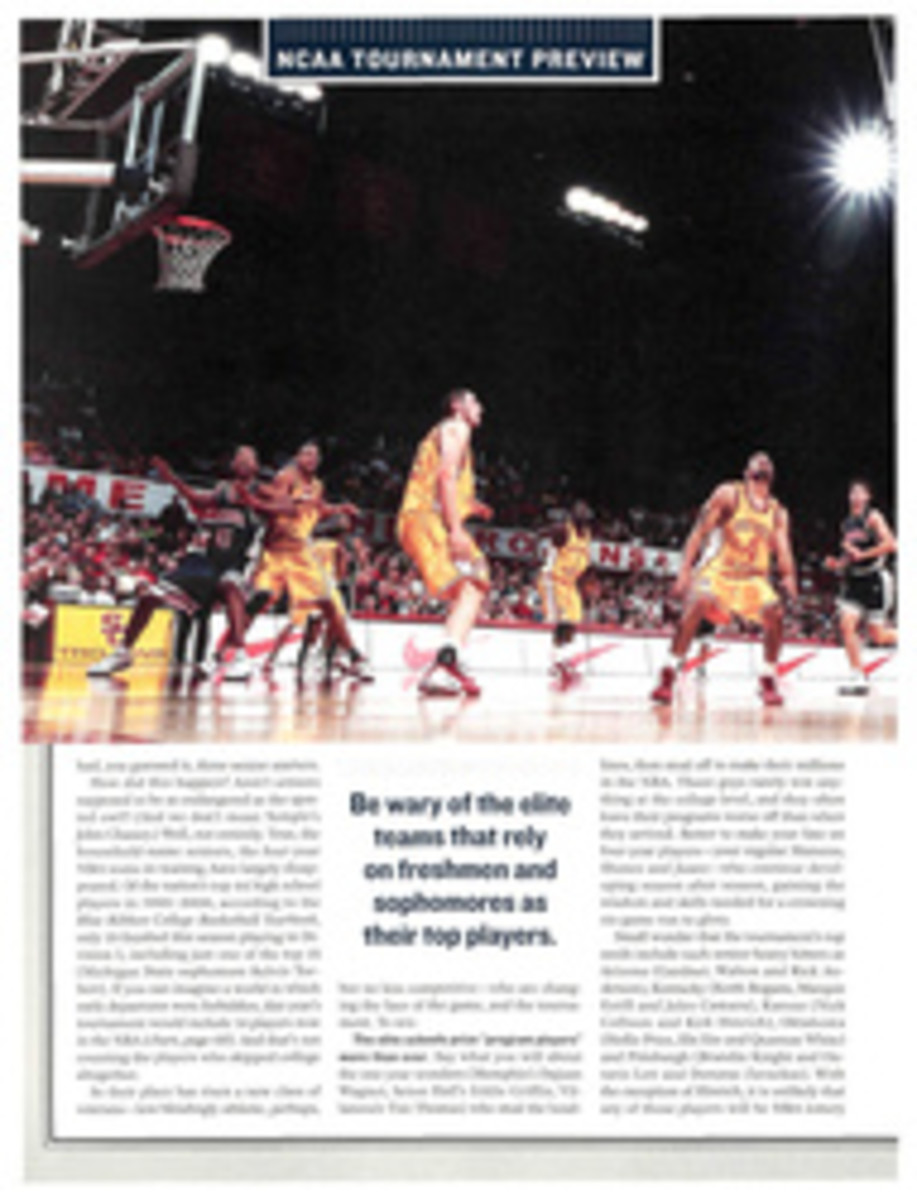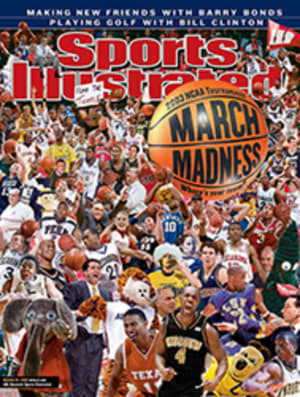
Big Play If Davis Love III is to avoid the kind of back-nine collapse he had at the Honda, he should take a page out of fellow Tar Heel Dean Smith's playbook
Over the first 63 holes at the Country Club of Mirasol, Davis
Love III had nines of 33, 33, 32, 33, 33, 32 and 32, putting him
at 24 under par and one stroke ahead of Justin Leonard. Then Love
mysteriously fell apart, shooting a one-over 37 coming home and
losing to Leonard by one. How could a player of Love's caliber
disintegrate so quickly on a wide-open course with no wind and
soft greens? It appeared that crunchtime pressure forced him out
of his process, leading to a series of awful shots, including a
chunked four-iron on 15, a thin eight-iron at 16 (which led to a
crucial bogey), a hooked drive into a hazard at 17 (above) and a
pushed nine-iron at 18. Love, who played at North Carolina, has
15 Tour wins, but he has come unglued down the stretch before,
notably at the tournaments he wants to win the most--the majors.
He could steel himself by tailoring his practice sessions to
replicate the pressure he feels when a title is on the line.
That's how legendary Tar Heels basketball coach Dean Smith taught
his teams to thrive under the gun. Addressing the recent Golf
Magazine Top 100 Teachers' summit in Pinehurst, N.C., Smith told
us about a game in which the Tar Heels were down 18 points with
only a few minutes to play. Yet during a timeout Smith told his
players, "Isn't this great? Let's go out and have a blast!"
Playing loose, the Tar Heels went on to win in overtime. If Love
had a fearless attitude like that, I'd make him one of the
favorites next month in Augusta.
THE TIP
COACH SMITH told us teachers that he didn't lead his North
Carolina teams to an NCAA-record 879 wins because of his
ingenious X's and O's. Smith says the key to their success was
his habit of replicating gamelike pressure during practice, which
taught his players to look forward to the kind of intense
end-of-the-game situations that scared many of their opponents.
Smith would hire referees to officiate intrasquad scrimmages and
would recruit high school kids to heckle players while they
practiced free throws. To learn to think clearly, feel
comfortable and relish crunchtime, golfers should also recreate
pressure-packed situations while practicing. Here are three ways
to do it.
1. FIVE IN A ROW Hit five consecutive shots to a target with a
specific ball flight. For example, hit five low, right-to-left
seven-irons at the same target.
2. REVERSE SCRAMBLE For each shot, hit three balls. Make the
worst result the starting point for your next series of shots.
3. MAKE 10 STRAIGHT On the practice green, make 10 straight
two-footers, then 10 straight four-footers and, finally, 10
straight six-footers. If you miss, start over with the
two-footers.
COLOR PHOTO: ANDY LYONS/GETTY IMAGES (LOVE)
COLOR PHOTO: GRANT HALVERSON/AP (SMITH) DEAN'S LIST Carolina's Smith says practice, even in golf, should replicate crunchtime pressure.
COLOR PHOTO: ANDREW GOMBERT (GRING) Ron Gring, 45, teaches at TimberCreek Golf Club in Daphne, Ala., and is one of Golf Magazine's Top 100 Teachers.
OUR TOP TEACHER SAYS...
"It's time to quit miking players, as the Golf Channel did at
the LPGA event in Tucson. The mike is a trap that prevents
players from being themselves."
"I was at the Honda, and despite the outrageous scoring,
Mirasol is no cream puff. The Tour is now so deep that you have
to play lights out just to make the cut."
"Second-year player Jonathan Byrd has the PGA Tour's most
technically sound swing."
"Davis Love III is known as a power player, but finesse and
short irons are the heart of his game. How else could he win so
often at short tracks such as Hilton Head [four times] and Pebble
Beach [twice]?"
"Tour players may say they don't want to participate in the
Presidents or Ryder cups, but secretly they do, which is why
nobody will skip November's Presidents Cup in South Africa."

